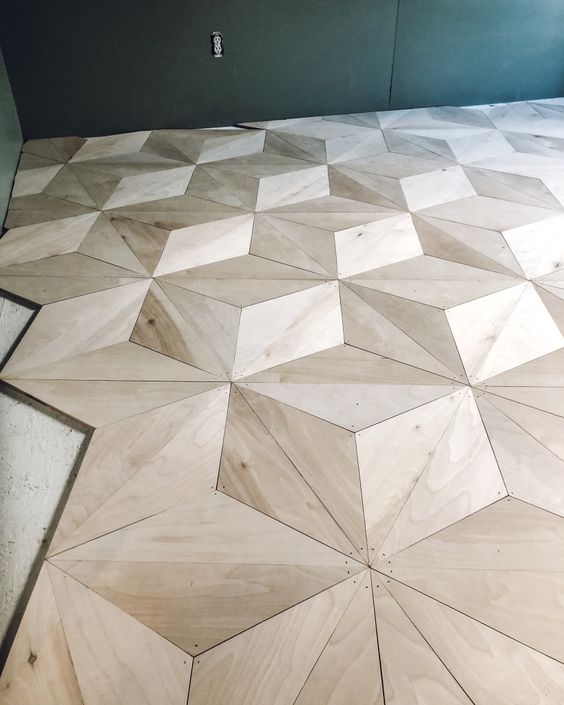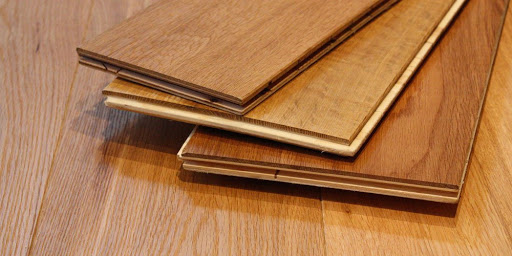|
Bee's Wing
A small, tight cross marking mottle, similar in appearance to a bee's wing. It occurs most often in Satinwood and also occasionally in Eucalyptus and Mahogany
|
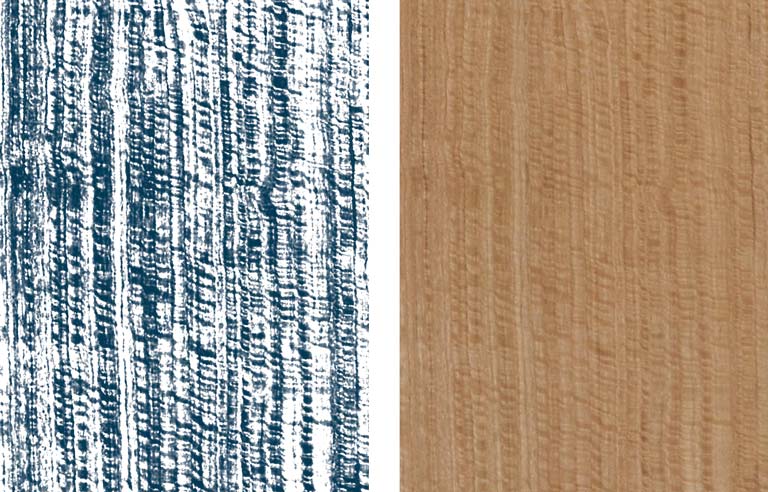
|
|
Bird's-Eye
The name itself describes it best. Once considered a defect, the best bird's-eye flitches are now expensive and in demand. These veneers are most often rotary cut or half-round sliced (in an arc) to produce the most uniform distribution of nice round eyes. Bird's-eye is most common in maple (shown), but bird's-eye does rarely occur in a few other species.
|
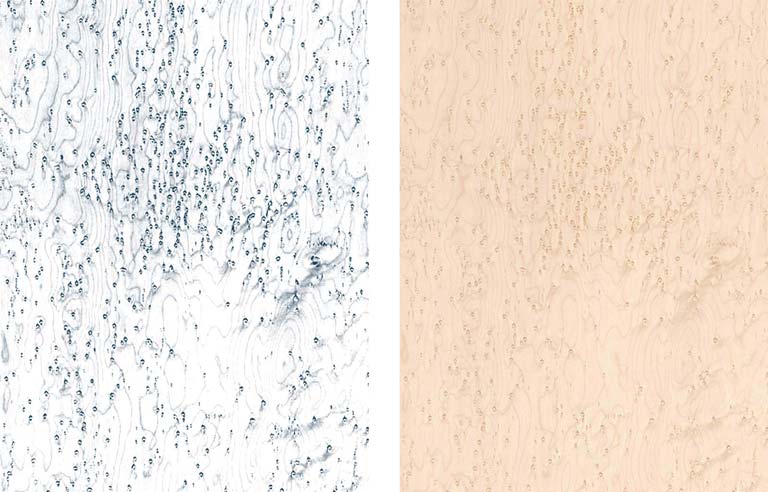
|
|
Blister
This figure appears as short, straight raised sections. Often described differently based on their shape and size: if oval they are called quilt figure,, if longer, fiddleback, and if shorter, pomelle. Blister figure is the result of rotary cutting across an uneven contour of growth rings.
|
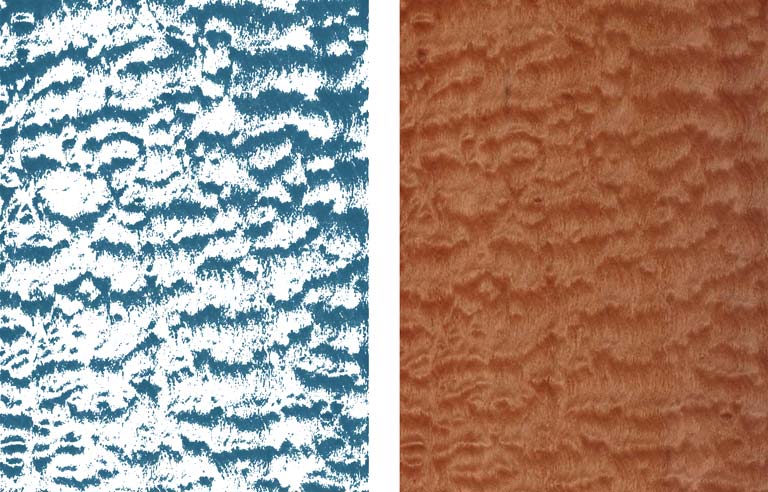
|
|
Broken Fiddleback
An estimable variation of curly figure, this figure's name is taken from its customary use for violin backs. Logs for fiddleback veneers are quarter sawn to produce very straight grain with nearly perpendicular curls running uninterrupted from edge to edge. Maple, makore (shown), anigre and English sycamore head a list of about 12 fiddleback-prone species.
|
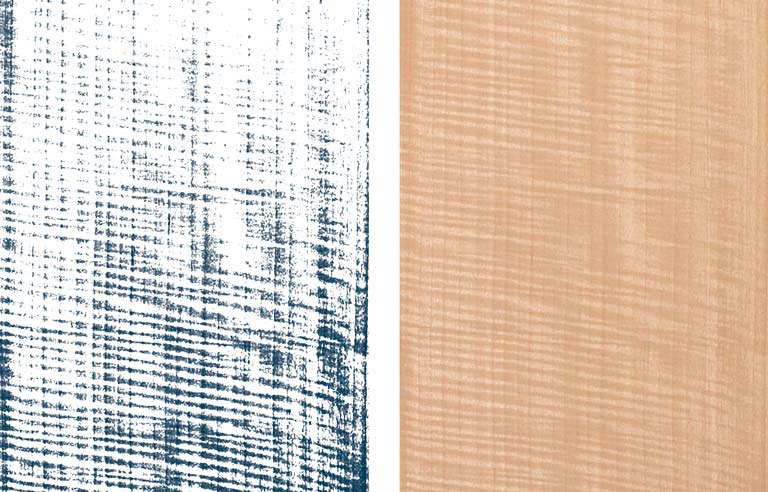
|
|
Burl
Growths on trees produce some of the most prized veneers. Usually available in smallish, often defective sheets, burls feature swirling grain around clusters of dormant buds, rings or eyes It's the result of a wart-like growth on Walnut, Maple, Redwood trees, which are rotary cut to produce veneer. Burl leaves are generally smaller than other veneers.
|
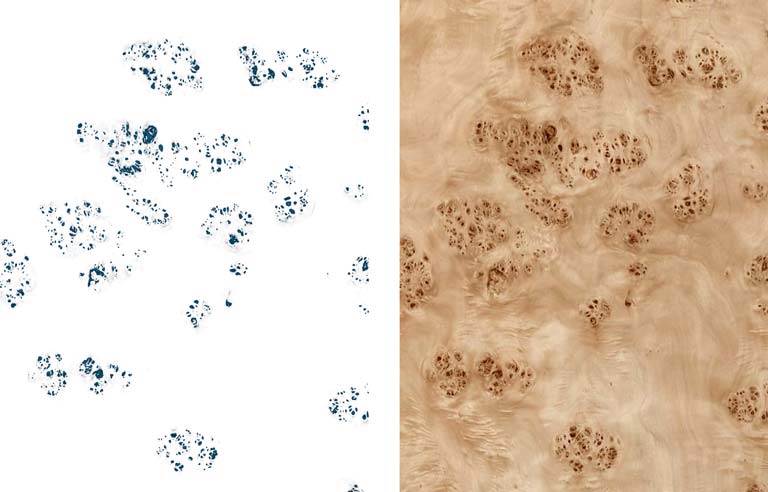
|
|
Crotch
figuring is cut from the juncture of a tree's trunk and main branches. It has a wide range of appearance, including flame, plume, rooster tail, feather, or burning bush. Leaves are generally smaller. This figure is most common in Walnut and Mahogany
|

|
|
Curly
Contortions in grain direction that reflect light differently create an appearance of undulating waves known as curly grain. Many species develop this figure, but most commonly maple (shown). Stump and butt sections of trees often produce a diagonal, staircase-like curl referred to as "angel steps" and a rolling curl figure that is called "cross-fire."
|
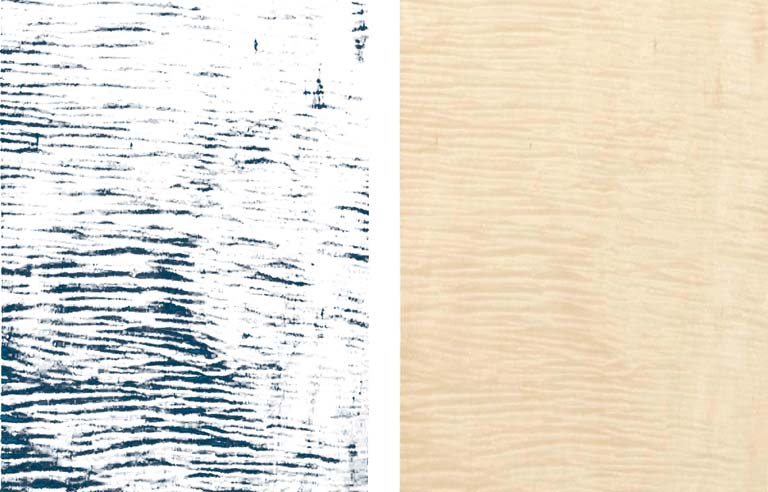
|
|
Mottle
Mottle is a wrinkled, blotch marking across the grain that is produced when wavy grain combines with a spiral. Broad cross markings produce a block or checkerboard pattern called block mottle. The mottled figure may be scattered randomly (broken mottle) or appear as a regular checkerboard pattern (block mottle). Members of the mahogany family, koa, sapele, bubinga and African satinwood (shown) most commonly exhibit mottled figure.
|
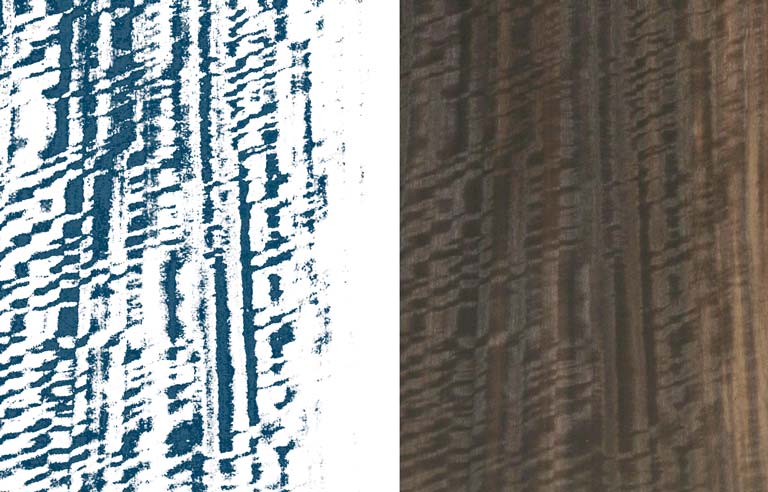
|
|
Pommele
This figure resembles a puddle surface during a light rain: a dense pattern of small rings enveloping one another. Its name comes from the French word "pomme" for "apple."
|
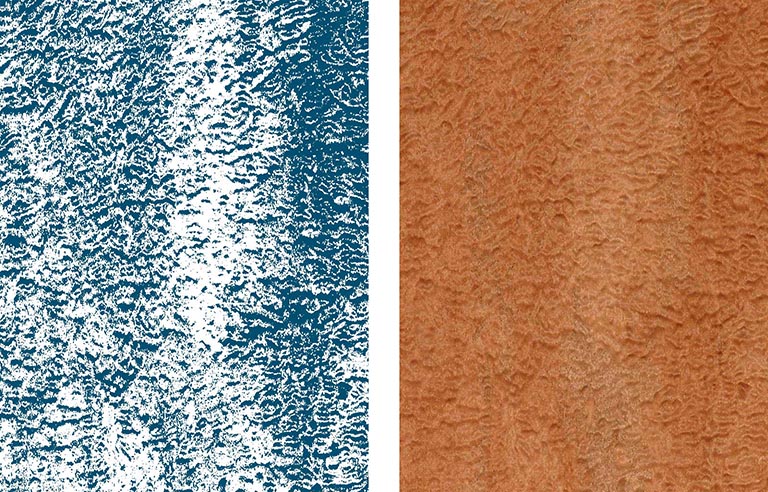
|
|
Peanut Shell
When certain woods exhibit a quilted or blistered figure, they are rotary cut to promote a random, wild grain pattern as well. This peanut-shell grain creates a visual illusion similar to quilted figure: the veneer appears bumpy and pitted, when in fact it's flat.
|
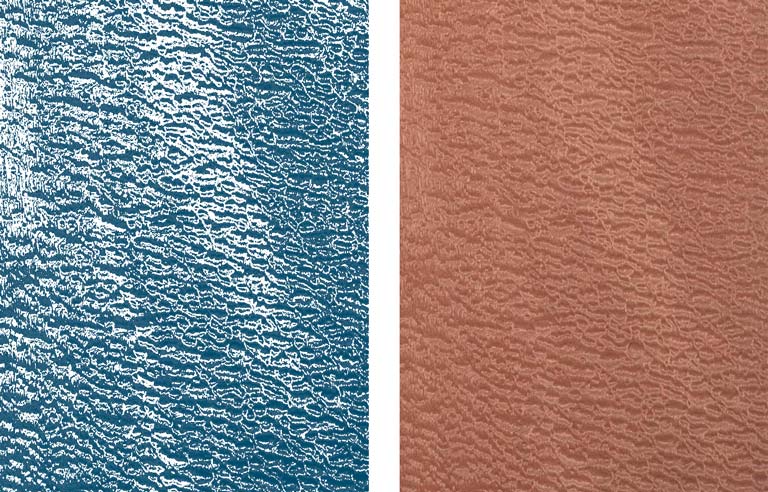
|
|
Wormy
Wormy marks are numerous elongated "spots" interspersed where the wood has been eaten away by boring insects (generally beetles). Sometimes the hole is filled in by natural processes, leaving elongated, worm-shaped discolored areas. In many trees, wormholes are more likely in the sapwood than in the heartwood
|
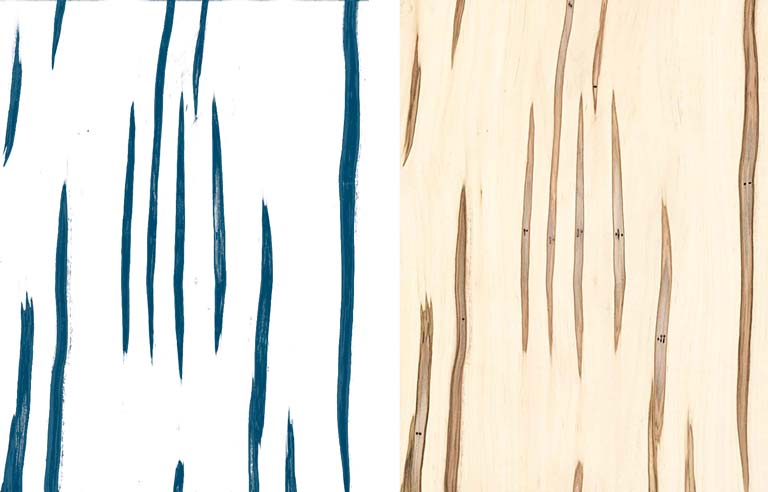
|
|
Swirl
This figure is a visually gentler version of regular crotch figure. As the name implies, the grain meanders and swirls around, often seeming to convolute and fold in upon itself. The densest portions of the swirl show up darker or shaded compared to the lighter surrounding wood. Swirl occurs in species including walnut (shown), mahogany, cherry and maple
|
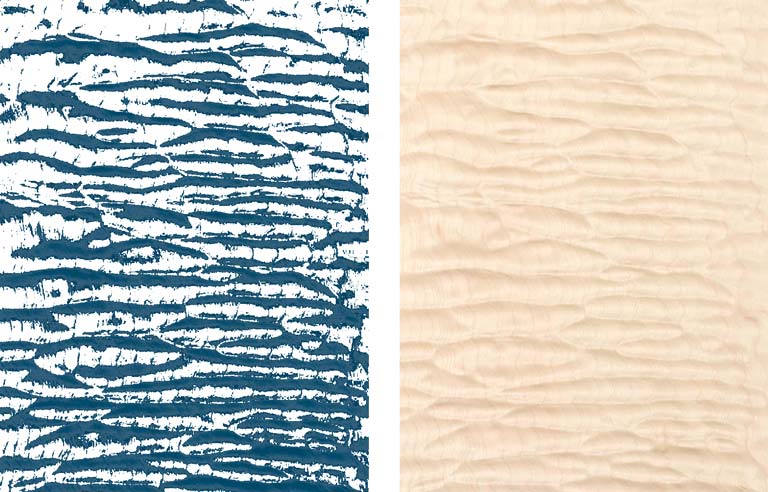
|













